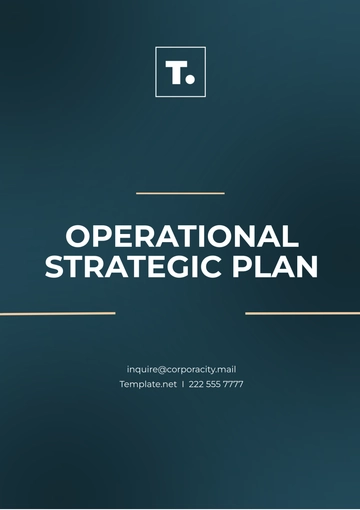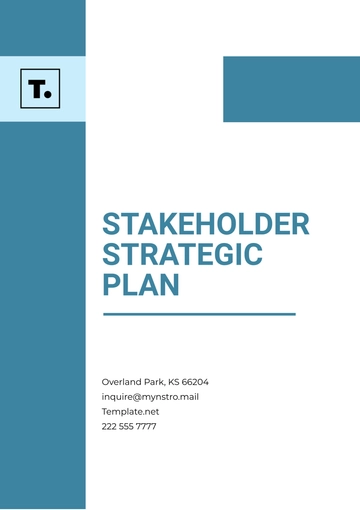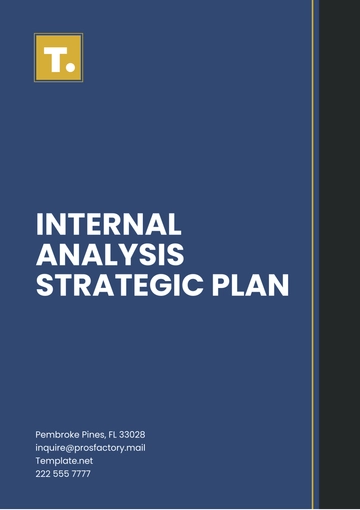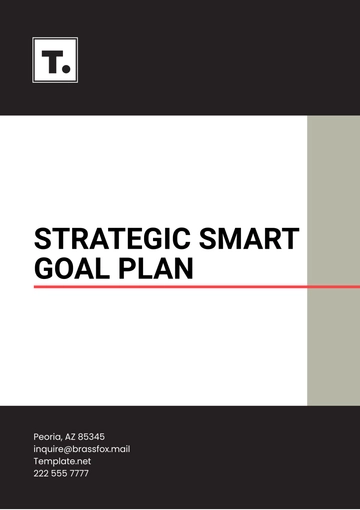Free Education Strategic Plan
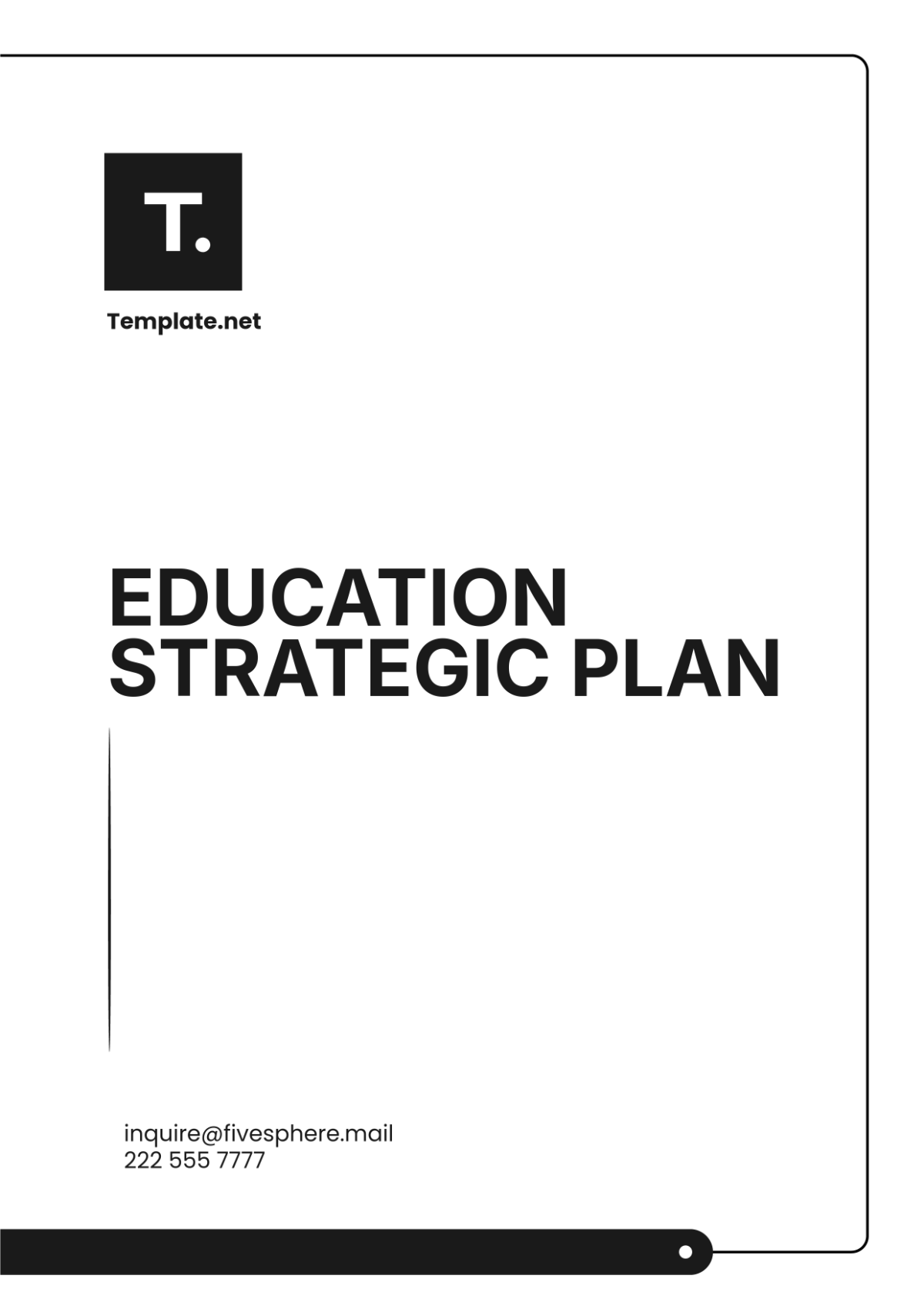
I. Executive Summary
This Education Strategic Plan outlines the strategic direction for [Your Company Name] from 2050 to 2055. Our mission is to transform the educational experience by fostering an inclusive, innovative, and supportive environment that prepares students for the challenges of the future. This plan aims to enhance educational outcomes, build robust community partnerships, and ensure the optimal use of resources. It serves as a comprehensive roadmap for achieving our goals and fulfilling our mission of equipping every student with the skills necessary to thrive in a rapidly evolving world.
II. Mission and Vision Statements
A. Mission Statement
[Your Company Name] is dedicated to delivering an inclusive and high-quality educational experience that empowers all students to reach their full potential. We strive to cultivate critical thinking, creativity, and collaboration in our learners, preparing them to become responsible and engaged citizens in a global society.
B. Vision Statement
Our vision for 2055 is to be a leader in education, where every student is inspired to learn, achieve, and thrive. We aim to create a learning community that embraces diversity, fosters innovation, and adapts to the changing needs of students and society.
III. Goals and Objectives
A. Goal 1: Improve Academic Achievement
Objective 1.1: Increase student proficiency in core subjects (Math, Science, and Literacy) by 20% by the end of the 2054 academic year.
Objective 1.2: Enhance student engagement through project-based learning initiatives, targeting at least 75% of students participating in collaborative projects by 2053.
B. Goal 2: Foster a Safe and Inclusive Environment
Objective 2.1: Implement comprehensive social-emotional learning programs to improve students' emotional resilience and interpersonal skills, achieving a satisfaction rate of 85% among students and parents by 2052.
Objective 2.2: Reduce reported bullying incidents by 40% by 2054 through proactive prevention strategies and increased student support systems.
C. Goal 3: Strengthen Community Partnerships
Objective 3.1: Establish at least 10 new partnerships with local businesses and organizations to provide mentorship, internships, and real-world learning experiences for students by 2055.
Objective 3.2: Increase parent and community involvement in school activities by 30% by 2053, fostering a collaborative atmosphere that enhances student support.
IV. Strategies and Action Plans
A. Strategy 1: Curriculum Development
Action Plan 1.1: Review and revise the curriculum to align with updated state standards and integrate interdisciplinary approaches by 2053.
Action Plan 1.2: Incorporate cutting-edge technology into the classroom, including virtual reality (VR) and artificial intelligence (AI) tools, to enhance learning experiences by 2052.
B. Strategy 2: Professional Development
Action Plan 2.1: Provide ongoing training for teachers on differentiated instruction, cultural competency, and technology integration, with at least three professional development days scheduled each academic year.
Action Plan 2.2: Implement mentorship programs for new teachers, pairing them with experienced educators for guidance and support, with a target of 90% participation by 2052.
C. Strategy 3: Community Engagement Initiatives
Action Plan 3.1: Host quarterly community forums to gather input and feedback from stakeholders, ensuring that at least 200 community members participate in each event.
Action Plan 3.2: Develop volunteer programs that connect parents and community members with classroom activities, aiming to recruit 100 volunteers by the end of 2052.
V. Assessment and Evaluation
To measure the effectiveness of this strategic plan, we will:
Conduct annual assessments of student academic performance using standardized tests, formative assessments, and performance tasks.
Utilize surveys and feedback forms to gauge stakeholder satisfaction and engagement, aiming for at least an 80% response rate from parents and community members.
Review progress toward goals and objectives biannually, using a dedicated evaluation team to analyze data and adjust strategies as necessary based on findings.
VI. Budget and Resource Allocation
The estimated budget for the implementation of this strategic plan is $1.5 million over five years. Resources will be allocated as follows:
Curriculum Development: $500,000 for curriculum revision and technology integration.
Professional Development: $300,000 for training and mentorship programs.
Community Engagement: $200,000 for initiatives to strengthen partnerships and increase community involvement.
Technology Integration: $500,000 for purchasing hardware and software, as well as training staff.
VII. Stakeholder Engagement
We are committed to involving stakeholders throughout the implementation of this strategic plan. Strategies include:
Regular communication through newsletters, social media updates, and a dedicated section on the school website to keep stakeholders informed about progress and events.
Opportunities for stakeholder participation in decision-making processes, including focus groups to discuss curriculum changes and community forums to gather input on strategic initiatives.
Formation of a strategic planning committee that includes representatives from various stakeholder groups, including teachers, parents, community leaders, and students, ensuring diverse perspectives are considered in the planning process.
- 100% Customizable, free editor
- Access 1 Million+ Templates, photo’s & graphics
- Download or share as a template
- Click and replace photos, graphics, text, backgrounds
- Resize, crop, AI write & more
- Access advanced editor
Create a roadmap for success in education with our Education Strategic Plan Template available at Template.net. This customizable, editable template is perfect for schools, universities, and educational institutions aiming for growth. Use our AI Editor Tool to easily adjust sections like goals, initiatives, and timelines. Whether you're focusing on curriculum development, staff performance, or student success, this template offers a structured framework to guide your institution's strategic planning.


















